#Austin Harper
Explore tagged Tumblr posts
Text
Camp Camp Season 05, Episode 04 “Infested” Spoilers!
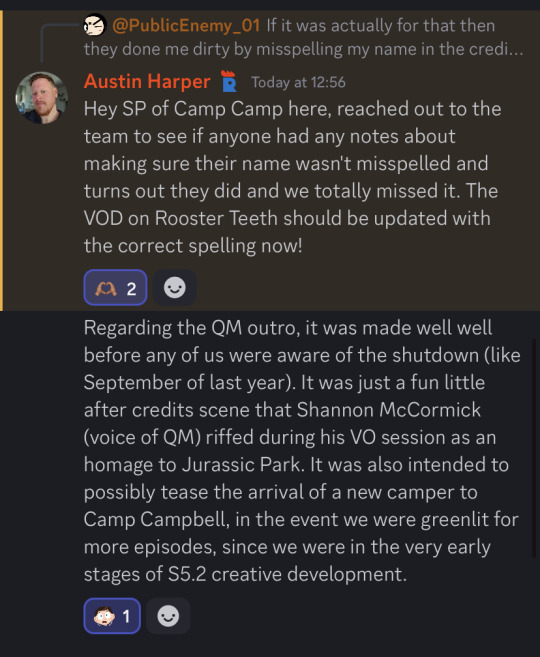

We could have possibly had a new camper to segue into having more episodes for the rest of the season!
Although, it is not fully confirmed if that was the case or not. But it does leave an slight opening for the hopes of Camp Camp continuing in the future if this “new camper” ever gets expanded on!
#camp camp#camp camp season 5#camp camp season 5 spoilers#spoilers#season 05 episode 04#camp camp season 05 episode 04#Austin Harper#camp camp info
54 notes
·
View notes
Text

Today we will be taking a look at the various couples in Hollywood to give them a rating. Keep in mind, we're using "couple" loosely. Some of these are exes, situationships, etc. The rating will be out of 10 with points in the following categories loyalty (1), attractiveness (2), power couple (2), compatibility (2), individual personalities (2), public cuteness (1).
MATEO AND VINCENT -
loyalty - There have been no signs that either of them have been disloyal, nor that either of them are the type. Full points. attractiveness - They're both very attractive and look good together as a couple! They'll get full points. power couple - Mmm.. I'm gonna be honest. I'm not sure about this one? Mateo isn't really in the public eye outside of singular reality tv stunt. We'll give them 1 point in this category. compatibility - We don't know that much about them as a couple, but there have seemingly been no hiccups. individual personalities - They both seem as sweet as sugar, so we'll give them full points for this. public cuteness - Mmm. Unfortunately, I'll be the stickler. In the past few months, we haven't seen a ton of public interaction between the two of them, so we'll give them .25 in this category. OVERALL SCORE - 8.25/10
OLIVIA AND ROMAN -
loyalty - We have zero faith in the ability of Olivia to be loyal to anyone. So we'll give .5 points because we think Roman could be. attractiveness - Unfortunately..Liv.... We'll give 1 point in this category. power couple - We're hoping that Olivia fails sometime soon, and Roman has just started releasing his own music. We're not sure about this one.... .5 again. compatibility - Yeah, no. individual personalities - Roman seems great! public cuteness - Roman doesn't post much on social media, but she posts pictures of him from time to time. OVERALL SCORE - 3.5/10
LOLA AND SCOUT -
loyalty - Its hard to imagine these two as super loyal, when it seems like maybe there are some break ups in between? We'll give half a point because this time together has lasted for a while. attractiveness - They're a very attractive couple! power couple - They're so new to Hollywood...what power? No part of them gives off ambitious bad asses in power. They give off more..college students letting loose. Zero points. compatibility - This one is tough. We'll give them a one. individual personalities - We're gonna be honest. I don't know that much about them, but they seem relatively likeable. We'll give them 1 point. public cuteness - They post cute stuff together occasionally, but not super frequently. We'll give them .5 for looking so cute on tour together. OVERALL SCORE - 5/10
SEBBY AND MARGEAUX -
loyalty - This one is a toss up. Haven't there been some...rumors? Some...uncertantiy at the beginning of their relationship..? That didn't set them off in a good foot in this category, but we'll give them half a point. attractiveness - Sebby's looks are up for major debate. Margeaux is pretty, though, so she'll get one point for them. power couple - This is another one I'm torn on. They're obviously famous in their own regard, but its hard to really define them as a super huge 'power couple'. We'll give them 1.5 because once you curbstomp someone, you start to lose a bit of credibility. compatibility - They're very compatible! They get full points here. They seem very in love. individual personalities - Again..up for debate. The consensus is that Sebby is a really nice guy, but that Margeaux...maybe isn't as much. We'll give them 1 point for their efforts. public cuteness - While some of their stuff can be on the edge of cute and obscene, they do post the most about each other. So we'll give them .75, with the .25 cause some of it is just..ick. OVERALL SCORE - 6.75/10
BONNIE AND FLETCHER -
loyalty - Is this still a touchy subject? We're gonna go with 0. attractiveness - Mmm. I'd say they're...fine? They're both clearly attractive people, but they scream very much 'standard cute couple'. We'll give them 1.75, because it is a bit generic. power couple - I mean..son of Amazon, but she pulls the points back again. We'll give them a 1.75. compatibility - This one..again.. Its hard to tell because there's been so much fighting and so many problems. We'll give them a 1 for this because they're working it out for a reason (and lets hope its just not because of the trust fund). individual personalities - This one is a bit of a rough one because they've been in such a rough patch, but Fletcher seemed fairly nice? We've had less public interaction with Bonnie, but we'll give them 1.5 to be nice. public cuteness - They are fairly cute sometimes. They post lots of pictures together, so we'll give them the full point. OVERALL SCORE - 7/10
AXEL AND SAINT -
loyalty - They seem very loyal to each other without issue. I guess maybe we COULD dock them .25 points for time they broke up, but we won't. attractiveness - I guess it depends on your tastes. Their looks go well together, so we'll give them the points. power couple - For some reason, I refuse to say that Axel could be apart of a true power couple. Saint has some pull with Austin, but for some reason they - as a couple - just don't scream POWER COUPLE to me. We'll give them .5 points. compatibility - They seem fairly compatible, so we'll give them the points. individual personalities - This..you know. Axel seems nice enough, but Saint doesn't exactly seem super agreeable? We'll give them 1 point. public cuteness - Axel likes all of Saint's photos, but Axel likes everyones photos. We're gonna go with a .5 here. OVERALL SCORE - 7/10
AUSTIN AND ESSENCE -
loyalty - These two seem fiercely loyal to each other. So we'll give them the full point. attractiveness - They're a fairly attractive couple, but they just don't look like they would be together. We'll give them 1.5 points. power couple - They definitely have full power couple vibe. Clothing, label owner, acting, all of that. compatibility - I'm sorry. We've gotta wonder what these two talk about? They're clearly compatible to a point, but...what do they talk about?!?! We'll give them 1.5. We're taking away .5 for our confusion. individual personalities - We love the both of them so much! Lovely! public cuteness - Have you seen Austin's bio? OVERALL SCORE - 9/10
#mateo levine#vincent barlowe#olivia bennett#roman rizvi#lola ackerman#scout caulfield#sebby jones#margeaux jones#bonnie astor#fletcher astor#axel parrish#saint harper#austin harper#essence woods
0 notes
Text

Disclaimer: Legends Magazine does not share the views shared in this article. There are no spoilers!
Apparently, Alexis Woods has had enough of the plastic Barbie doll sweeping the box office. Who would've thought?
The feminist narrative portrayed in the movie is one of the key points of contention for Alexis Woods. In a 15-minute rant she talked about it promoting a strong, independent worldview for women, which she believes undermines the biblical concept of family citing Matthew 19:1-12.
But Woods' critique does not stop there; she also takes issue with the depiction of male characters in the film. According to her, every male character in the movie is either portrayed as an idiot, a bigot, or a pitiful loser. This representation, she argues, "perpetuates a negative view of masculinity, unfairly vilifying men for embracing their natural roles as providers and protectors."
Yikes.
"There is nothing wrong with men wanting to be men. It's normal, it's natural," Woods states firmly, defending her belief in the importance of embracing traditional gender roles. "I am disappointed that my son-in-law, Austin Harper, has put himself in a role like this."
She then went on to say that nobody should take their young daughter to a film like this, stating that it would "fill their head with nonsense". She also denoted that she found the movie to be "anti-motherhood" due to a joke about girls not wanting to play with baby dolls.
In her long rant about the depiction of the Barbie movie, the only nice thing she had to say about it was that the set design was beautiful, but that is seemingly where her love towards the movie ends.
Needless to say, I don't think Alexis Woods took photos in the Barbie box after the movie.
0 notes
Text

16 notes
·
View notes
Text
youtube
youtube
I'm never gonna get tired of these types of videos!
#keyan carlile#disney#wizards of waverly place#wowp#alex russo#justin russo#max russo#jerry russo#theresa russo#harper finkle#selena gomez#david henrie#jake t. austin#david deluise#maria canals barrera#jennifer stone#Youtube
248 notes
·
View notes
Text



Jerry Schilling, Harper Vivienne Ann Lockwood, Lisa Marie Presley, Baz Luhrmann, Priscilla Presley, Riley Keough, Austin Butler, & Finley Aaron Love Lockwood attend the Handprint Ceremony honoring Three Generations of Presley's at TCL Chinese Theatre on June 21, 2022 in Hollywood, California
#Elvis 2022#Jerry Schilling#Harper Vivienne Ann Lockwood#Harper Lockwood#Lisa Marie Presley#Baz Luhrmann#Priscilla Presley#Riley Keough#Austin Butler#Finley Aaron Love Lockwood#Finley Lockwood#TCL Chinese Theatre#June 21st 2022#Hollywood#California#Elvis#Elvis Presley
9 notes
·
View notes
Text
By: Tyler Austin Harper
Published: Aug 14, 2023
The hotel was soulless, like all conference hotels. I had arrived a few hours before check-in, hoping to drop off my bags before I met a friend for lunch. The employees were clearly frazzled, overwhelmed by the sudden influx of several hundred impatient academics. When I asked where I could put my luggage, the guy at the front desk simply pointed to a nearby hallway. “Wait over there with her; he’s coming back.”
Who “he” was remained unclear, but I saw the woman he was referring to. She was white and about my age. She had a conference badge and a large suitcase that she was rolling back and forth in obvious exasperation. “Been waiting long?” I asked, taking up a position on the other side of the narrow hallway. “Very,” she replied. For a while, we stood in silence, minding our phones. Eventually, we began chatting.
The conversation was wide-ranging: the papers we were presenting, the bad A/V at the hotel, our favorite things to do in the city. At some point, we began talking about our jobs. She told me that—like so many academics—she was juggling a temporary teaching gig while also looking for a tenure-track position.
“It’s hard,” she said, “too many classes, too many students, too many papers to grade. No time for your own work. Barely any time to apply to real jobs.”
When I nodded sympathetically, she asked about my job and whether it was tenure-track. I admitted, a little sheepishly, that it was.
“I’d love to teach at a small college like that,” she said. “I feel like none of my students wants to learn. It’s exhausting.”
Then, out of nowhere, she said something that caught me completely off guard: “But I shouldn’t be complaining to you about this. I know how hard BIPOC faculty have it. You’re the last person I should be whining to.”
I was taken aback, but I shouldn’t have been. It was the kind of awkward comment I’ve grown used to over the past few years, as “anti-racism” has become the reigning ideology of progressive political culture. Until recently, calling attention to a stranger’s race in such a way would have been considered a social faux pas. That she made the remark without thinking twice—a remark, it should be noted, that assumes being a Black tenure-track professor is worse than being a marginally employed white one—shows how profoundly interracial social etiquette has changed since 2020’s “summer of racial reckoning.” That’s when anti-racism—focused on combating “color-blindness” in both policy and personal conduct—grabbed ahold of the liberal mainstream.
Though this “reckoning” brought increased public attention to the deep embeddedness of racism in supposedly color-blind American institutions, it also made instant celebrities of a number of race experts and “diversity, equity, and inclusion” (DEI) consultants who believe that being anti-racist means undergoing a “journey” of radical personal transformation. In their righteous crusade against the bad color-blindness of policies such as race-neutral college admissions, these contemporary anti-racists have also jettisoned the kind of good color-blindness that holds that we are more than our race, and that we should conduct our social life according to that idealized principle. Rather than balance a critique of color-blind law and policy with a continuing embrace of interpersonal color-blindness as a social etiquette, contemporary anti-racists throw the baby out with the bathwater. In place of the old color-blind ideal, they have foisted upon well-meaning white liberals a successor social etiquette predicated on the necessity of foregrounding racial difference rather than minimizing it.
As a Black guy who grew up in a politically purple area—where being a good person meant adhering to the kind of civil-rights-era color-blindness that is now passé—I find this emergent anti-racist culture jarring. Many of my liberal friends and acquaintances now seem to believe that being a good person means constantly reminding Black people that you are aware of their Blackness. Difference, no longer to be politely ignored, is insisted upon at all times under the guise of acknowledging “positionality.” Though I am rarely made to feel excessively aware of my race when hanging out with more conservative friends or visiting my hometown, in the more liberal social circles in which I typically travel, my race is constantly invoked—“acknowledged” and “centered”—by well-intentioned anti-racist “allies.”
This “acknowledgement” tends to take one of two forms. The first is the song and dance in which white people not-so-subtly let you know that they know that race and racism exist. This includes finding ways to interject discussion of some (bad) news item about race or racism into casual conversation, apologizing for having problems while white (“You’re the last person I should be whining to”), or inversely, offering “support” by attributing any normal human problem you have to racism.
The second way good white liberals often “center” racial difference in everyday interactions with minorities is by trying, always clumsily, to ensure that their “marginalized” friends and familiars are “culturally” comfortable. My favorite personal experiences of this include an acquaintance who invariably steers dinner or lunch meetups to Black-owned restaurants, and the time that a friend of a friend invited me over to go swimming in their pool before apologizing for assuming that I know how to swim (“I know that’s a culturally specific thing”). It is a peculiar quirk of the 2020s’ racial discourse that this kind of “acknowledgement” and “centering” is viewed as progress.
My point is not that conservatives have better racial politics—they do not—but rather that something about current progressive racial discourse has become warped and distorted. The anti-racist culture that is ascendant seems to me to have little to do with combatting structural racism or cultivating better relationships between white and Black Americans. And its rejection of color-blindness as a social ethos is not a new frontier of radical political action.
No, at the core of today’s anti-racism is little more than a vibe shift—a soft matrix of conciliatory gestures and hip phraseology that give adherents the feeling that there has been a cultural change, when in fact we have merely put carpet over the rotting floorboards. Although this push to center rather than sidestep racial difference in our interpersonal relationships comes from a good place, it tends to rest on a troubling, even racist subtext: that white and Black Americans are so radically different that interracial relationships require careful management, constant eggshell-walking, and even expert guidance from professional anti-racists. Rather than producing racial harmony, this new ethos frequently has the opposite effect, making white-Black interactions stressful, unpleasant, or, perhaps most often, simply weird.
Since the murder of George Floyd in May 2020, progressive anti-racism has centered on two concepts that helped Americans make sense of his senseless death: “structural racism” and “implicit bias.” The first of these is a sociopolitical concept that highlights how certain institutions—maternity wards, police barracks, lending companies, housing authorities, etc.—produce and replicate racial inequalities, such as the disproportionate killing of Black men by the cops. The second is a psychologicalconcept that describes the way that all individuals—from bleeding-heart liberals to murderers such as Derek Chauvin—harbor varying degrees of subconscious racial prejudice.
Though “structural racism” and “implicit bias” target different scales of the social order—institutions on the one hand, individuals on the other—underlying both of these ideas is a critique of so-called color-blind ideology, or what the sociologist Eduardo Bonilla-Silva calls “color-blind racism”: the idea that policies, interactions, and rhetoric can be explicitly race-neutral but implicitly racist. As concepts, both “structural racism” and “implicit bias” rest on the presupposition that racism is an enduring feature of institutional and social life, and that so-called race neutrality is a covertly racist myth that perpetuates inequality. Some anti-racist scholars such as Uma Mazyck Jayakumar and Ibram X. Kendi have put this even more bluntly: “‘Race neutral’ is the new “separate but equal.’” Yet, although anti-racist academics and activists are right to argue that race-neutral policies can’t solve racial inequities—that supposedly color-blind laws and policies are often anything but—over the past few years, this line of criticism has also been bizarrely extended to color-blindness as a personal ethos governing behavior at the individual level.
The most famous proponent of dismantling color-blindness in everyday interactions is Robin DiAngelo, who has made an entire (very condescending) career out of asserting that if white people are not uncomfortable, anti-racism is not happening. “White comfort maintains the racial status quo, so discomfort is necessary and important,” the corporate anti-racist guru advises. Over the past three years, this kind of anti-color-blind, pro-discomfort rhetoric has become the norm in anti-racist discourse. On the final day of the 28-day challenge in Layla Saad’s viral Me and White Supremacy, budding anti-racists are tasked with taking “out-of-your-comfort-zone actions,” such as apologizing to people of color in their life and having “uncomfortable conversations.” Frederick Joseph’s best-selling book The Black Friend takes a similar tack. The problem with color-blindness, Joseph counsels, is it allows “white people to continue to be comfortable.” The NFL analyst Emmanuel Acho wrote an entire book, simply called Uncomfortable Conversations With a Black Man, that admonishes readers to “stop celebrating color-blindness.” And, of course, there are endless how-to guides for having these “uncomfortable conversations” with your Black friends.
Once the dominant progressive ideology, professing “I don’t see color” is now viewed as a kind of dog whistle that papers over implicit bias. Instead, current anti-racist wisdom holds that we must acknowledge racial difference in our interactions with others, rather than assume that race needn’t be at the center of every interracial conversation or encounter. Coming to grips with the transition we have undergone over the past decade—color-blind etiquette’s swing from de rigueur to racist—requires a longer view of an American cultural transition. Civil-rights-era color-blindness was replaced with an individualistic, corporatized anti-racism, one focused on the purification of white psyches through racial discomfort, guilt, and “doing the work” as a road to self-improvement.
Writing in 1959, the social critic Philip Rieff argued that postwar America was transforming from a religious and economic culture—one oriented around common institutions such as the church and the market—to a psychological culture, one oriented around the self and its emotional fulfillment. By the 1960s, Rieff had given this shift a name: “the triumph of the therapeutic,” which he defined as an emergent worldview according to which the “self, improved, is the ultimate concern of modern culture.” Yet, even as he diagnosed our culture with self-obsession, Rieff also noticed something peculiar and even paradoxical. Therapeutic culture demanded that we reflect our self-actualization outward. Sharing our innermost selves with the world—good, bad, and ugly—became a new social mandate under the guise that authenticity and open self-expression are necessary for social cohesion.
Recent anti-racist mantras like “White silence is violence” reflect this same sentiment: exhibitionist displays of “racist” guilt are viewed as a necessary precursor to racial healing and community building. In this way, today’s attacks on interpersonal color-blindness—and progressives’ growing fixation on implicit bias, public confession, and race-conscious social etiquette—are only the most recent manifestations of the cultural shift Rieff described. Indeed, the seeds of the current backlash against color-blindness began decades ago, with the application of a New Age, therapeutic outlook to race relations: so-called racial-sensitivity training, the forefather of today’s equally spurious DEI programming.
In her 2001 book, Race Experts, the historian Elisabeth Lasch-Quinn painstakingly details how racial-sensitivity training emerged from the 1960s’ human-potential movement and its infamous “encounter groups.” As she explains, what began as a more or less countercultural phenomenon was later corporatized in the form of the anemic, pointless workshops controversially lampooned on The Office. Not surprisingly, this shift reflected the ebb and flow of corporate interests: Whereas early workplace training emphasized compliance with the newly minted Civil Rights Act of 1964, later incarnations would focus on improving employee relations and, later still, leveraging diversity to secure better business outcomes.
If there is something distinctive about the anti-color-blind racial etiquette that has emerged since George Floyd’s death, it is that these sites of encounter have shifted from official institutional spaces to more intimate ones where white people and minorities interact as friends, neighbors, colleagues, and acquaintances. Racial-awareness raising is a dynamic no longer quarantined to formalized, compulsory settings like the boardroom or freshman orientation. Instead, every interracial interaction is a potential scene of (one-way) racial edification and supplication, encounters in which good white liberals are expected to be transparent about their “positionality,” confront their “whiteness,” and—if the situation calls for it—confess their “implicit bias.”
In a vacuum, many of the prescriptions advocated by the anti-color-blind crowd are reasonable: We should all think more about our privileges and our place in the world. An uncomfortable conversation or an honest look in the mirror can be precursors to personal growth. We all carry around harmful, implicit biases and we do need to examine the subconscious assumptions and prejudices that underlie the actions we take and the things we say. My objection is not to these ideas themselves, which are sensible enough. No, my objection is that anti-racism offers little more than a Marie Kondo–ism for the white soul, promising to declutter racial baggage and clear a way to white fulfillment without doing anything meaningful to combat structural racism. As Lasch-Quinn correctly foresaw, “Casting interracial problems as issues of etiquette [puts] a premium on superficial symbols of good intentions and good motivations as well as on style and appearance rather than on the substance of change.”
Yet the problem with the therapeutics of contemporary anti-racism is not just that they are politically sterile. When anti-color-blindness and its ideology of insistent “race consciousness” are translated into the sphere of private life—to the domain of friendships, block parties, and backyard barbecues—they assault the very idea of a multiracial society, producing new forms of racism in the process. The fact that our media environment is inundated with an endless stream of books, articles, and social-media tutorials that promise to teach white people how to simply interact with the Black people in their life is not a sign of anti-racist progress, but of profound regression.
The subtext that undergirds this new anti-racist discourse—that Black-white relationships are inherently fraught and must be navigated with the help of professionals and technical experts—testifies to the impoverishment of our interracial imagination, not to its enrichment. More gravely, anti-color-blind etiquette treats Black Americans as exotic others, permanent strangers whose racial difference is so chasmic that it must be continually managed, whose mode of humanness is so foreign that it requires white people to adopt a special set of manners and “race conscious” ritualistic practices to even have a simple conversation.
If we are going to find a way out of the racial discord that has defined American life post-Trump and post-Charlottesville and post-Floyd, we have to begin with a more sophisticated understanding of color-blindness, one that rejects the bad color-blindness on offer from the Republican Party and its partisans, as well as the anti-color-blindness of the anti-racist consultants. Instead, we should embrace the good color-blindness of not too long ago. At the heart of that color-blindness was a radical claim, one imperfectly realized but perfect as an ideal: that despite the weight of a racist past that isn’t even past, we can imagine a world, or at least an interaction between two people, where racial difference doesn’t make a difference.
[ Via: https://archive.today/8zfvc ]
#Tyler Austin Harper#antiracism#antiracism as religion#neoracism#colorblindness#colorblind#color blindness#color blind#religion is a mental illness
12 notes
·
View notes
Text
Considering I’ve had the biggest crush on Selena Gomez since I was at least 7 it’s honestly shocking I didn’t realize I was gay until I was 21/22.
Alex Russo was definitely my gay awakening
#selena marie gomez#selena gomez#alex russo#wizards of waverly place#wowp#justin russo#max russo#jerry russo#theresa russo#harper finkle#david henrie#jake t austin#david deluise#Jennifer stone#maria canals barrera
29 notes
·
View notes
Photo
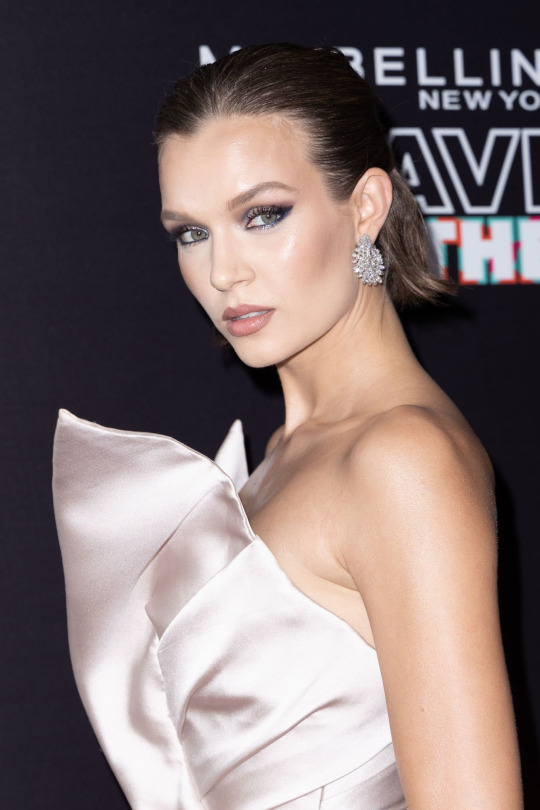
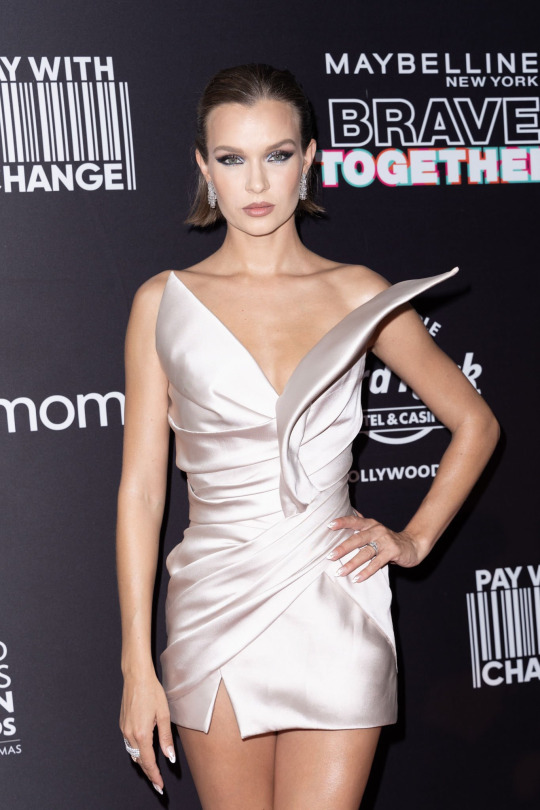


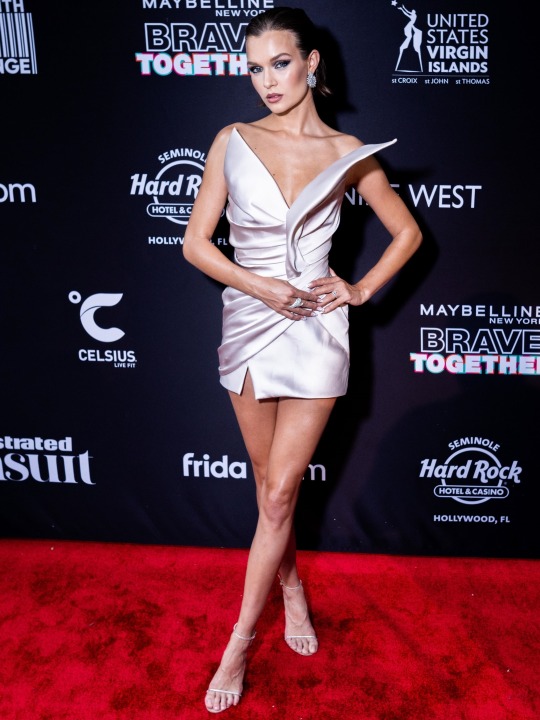
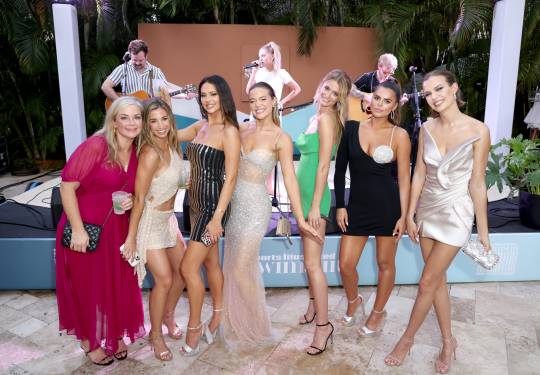
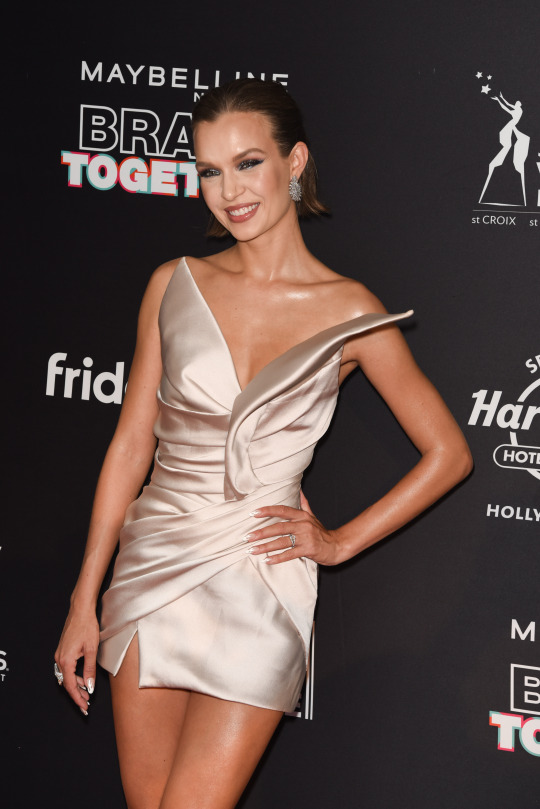
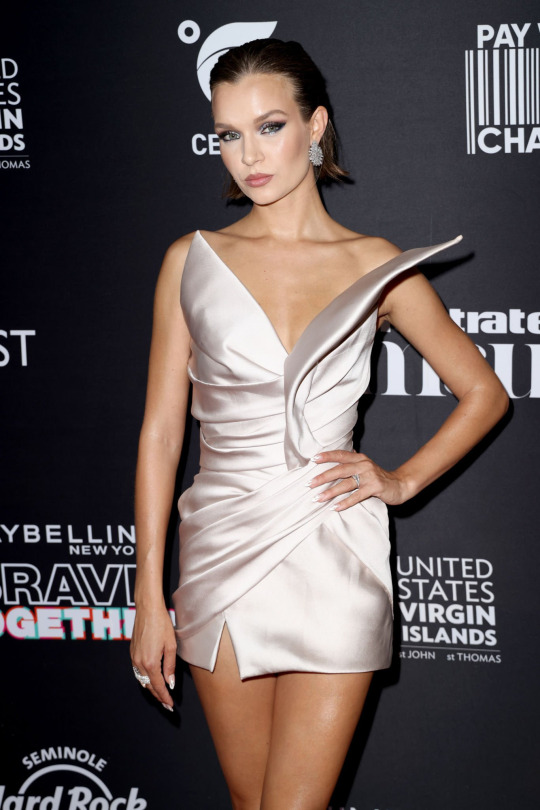

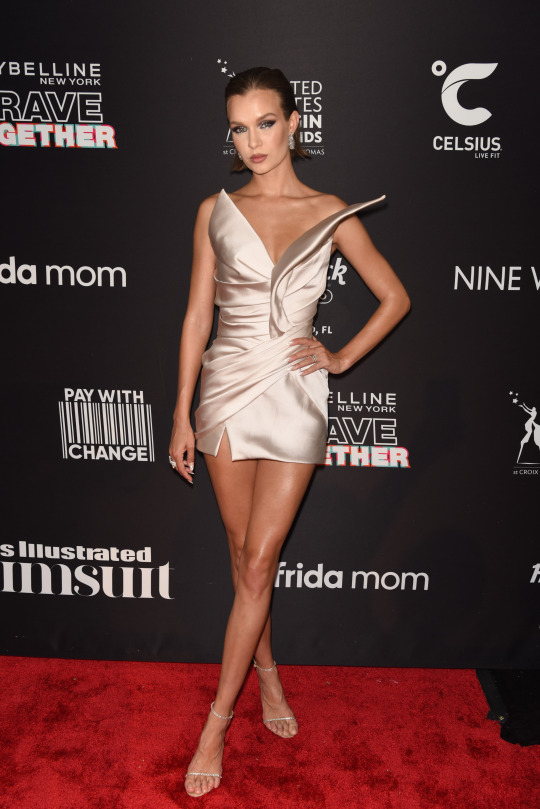
Josephine Skriver at the SI Swimsuit celebrates the launch of the 2022 Issue in Hollywood, Florida - May 21, 2022.
+32HQs
#hq#josephine skriver#events#si event#hollywood#may 21#2022#katie austin#christen harper#kate bock#kelsea ballerini#brooks nader#olivia ponton#1
103 notes
·
View notes
Text
Batfam Fancast Part 14: Outlaws
Its been a while since I made this Tumblr and wondered if I should finalized some older fancast I made. Specifically Jason Todd who a made a list of actors instead of choosing 1. So I thought it would be a nice idea to finalize who gets to play Jason Todd while casting two of his teammates in the Outlaws, Roy Harper aka Speedy/Arsenal/Red Arrow and Artemis of Bana-Mighdall (Still don't know how to pronounce that).
Jason Todd
Its time to finalize the fancast I made years ago. No need to really elaborate since I talked about this before, Alex Landi has become my final choice for Jason Todd. The Korean-Italian American has the build, the looks and with his current work in Grey's Anotomy, I definetly think he has the potential for the former Boy Wonder.


Roy Harper
For Green Arrow's own protege I wanted someone who can bring that same rugged energy that Jason Todd brought.someone who's been though stuff but is able to overcome their personal challenges. The actor must be old enough where its possible they became a parent when he was a teen.His daughter Lian Harper is a extremely important character in his story and sadly became an afterthought when they rebooted him in 2011 during the New 52.
Jake Austin Walker is 25, fits the look of the character and has worked in a previous DC project Stargirl.This actor just might have what it takes to play the Crimson Archer.
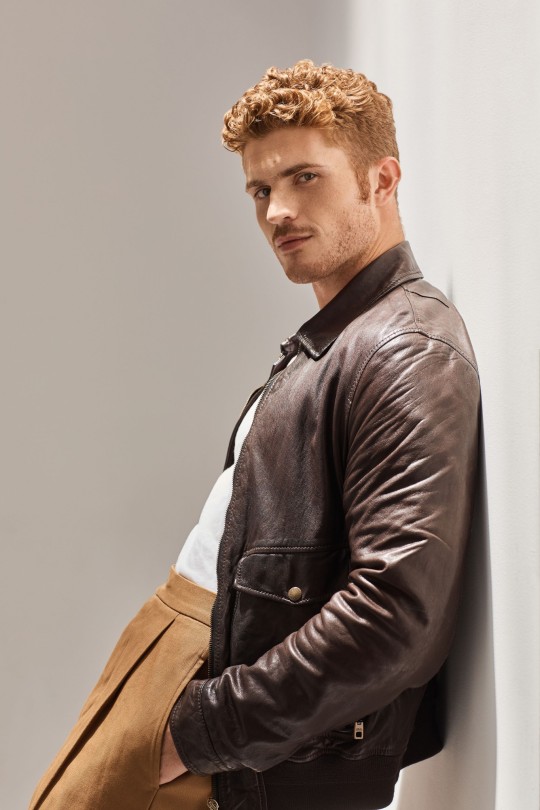

Artemis of Bana-Mighdall
The mysterious Artemis, no not the one from Young Justice. A fellow Amazon of the Bana-Mighdall tribe,who traveled to ancient Egypt from Greece, she is the apex warrior without the need of godly powers like Wonder Woman. Before her reappearance in Rebirth she was once a major side character that eventually took on the role of Wonder Woman. Practical, stubborn and passionate she found herself in the company of the Red Hood and reformed the Outlaws with him and even forming a romantic connection with him. He loved the kind of woman that will actually kill him.
Adria Arjona is known for a plethora of roles in major shows like Andor and actions movies such as 6 Underground. While not popularly known for any major action her time as a drama actor will bring depth and layers to this action-oriented character. While I originally considered casting wrestlers to play this role, it will be like rolling dice and most of the time you're going to lose. For every Dave Bautista there is Rock can only play himself or a John Cena who really needs the right director to help him out. Adria however has the skill and experience to perform this character, give her some intense stunt training and she has the potential to ace this role.


#batman#batfamily#batfam#fancast#batman fancast#red hood#jason todd#red arrow#speedy#arsenal#roy harper#artemis of bana mighdall#robin ii#robin#red hood and the outlaws#dc characters#dceu#dc comcis#alex landi#jake austin walker#adria arjona
75 notes
·
View notes
Photo

Austin Harper at the Met Gala 2023 Austin Harper joins the fray in an unapologetically dad-esque look, wearing soft colors that give off an effortlessly chic He certainly isn’t going to be causing any fashion bloggers to go crazy over this outfit, but he looks good, gives us more than a tuxedo and seems like the perfect accessory for Essence Woods to keep by her side. Where we run into some issues is the question about where, or if, this ensemble really fits the theme. Maybe we’re just not big-brained enough to remember the fable about the man in the champagne colored suit who killed a guy. Overall: 7/10
Theme: C-
0 notes
Photo

trigger warning: murder & gun violence
Hollywood director, James Prescott, was declared deceased after the cops were called to the home of his ex-wife, Essence Woods. Police records state that there were two calls received at 1:34 am and 1:39am stating that Prescott had allegedly broken into the singers home. This follows an appeal filed by Woods herself on the 11th of February requesting that her protective order request be re-evaluated by the chancery court clerk.
There is little known about the death of Prescott. Witnesses state that there were sounds of two gunshots. He was declared deceased on police arrival. No arrests have been made.
1 note
·
View note
Text
my serotonin only comes from hot netflix boys who i used to know from disney channel or nickelodeon
#topper thornton#jay kelso#five hargreeves#OBX#the umbrella academy#outer banks#that 90s show#that 70s show#austin north#mace coronel#aidan gallagher#i didnt do it#nicky ricky dicky and dawn#nicky harper#dicky harper
89 notes
·
View notes
Text
As a Black guy who grew up in a politically purple area—where being a good person meant adhering to the kind of civil-rights-era color-blindness that is now passé—I find this emergent anti-racist culture jarring. Many of my liberal friends and acquaintances now seem to believe that being a good person means constantly reminding Black people that you are aware of their Blackness. Difference, no longer to be politely ignored, is insisted upon at all times under the guise of acknowledging “positionality.” Though I am rarely made to feel excessively aware of my race when hanging out with more conservative friends or visiting my hometown, in the more liberal social circles in which I typically travel, my race is constantly invoked—“acknowledged” and “centered”—by well-intentioned anti-racist “allies.”
This “acknowledgment” tends to take one of two forms. The first is the song and dance in which white people not-so-subtly let you know that they know that race and racism exist. This includes finding ways to interject discussion of some (bad) news item about race or racism into casual conversation, apologizing for having problems while white (“You’re the last person I should be whining to”), or inversely, offering “support” by attributing any normal human problem you have to racism.
The second way good white liberals often “center” racial difference in everyday interactions with minorities is by trying, always clumsily, to ensure that their “marginalized” friends and familiars are “culturally” comfortable. My favorite personal experiences of this include an acquaintance who invariably steers dinner or lunch meetups to Black-owned restaurants, and the time that a friend of a friend invited me over to go swimming in their pool before apologizing for assuming that I know how to swim (“I know that’s a culturally specific thing”). It is a peculiar quirk of the 2020s’ racial discourse that this kind of “acknowledgment” and “centering” is viewed as progress.
My point is not that conservatives have better racial politics—they do not—but rather that something about current progressive racial discourse has become warped and distorted. The anti-racist culture that is ascendant seems to me to have little to do with combatting structural racism or cultivating better relationships between white and Black Americans. And its rejection of color-blindness as a social ethos is not a new frontier of radical political action.
No, at the core of today’s anti-racism is little more than a vibe shift—a soft matrix of conciliatory gestures and hip phraseology that give adherents the feeling that there has been a cultural change, when in fact we have merely put carpet over the rotting floorboards. Although this push to center rather than sidestep racial difference in our interpersonal relationships comes from a good place, it tends to rest on a troubling, even racist subtext: that white and Black Americans are so radically different that interracial relationships require careful management, constant eggshell-walking, and even expert guidance from professional anti-racists. Rather than producing racial harmony, this new ethos frequently has the opposite effect, making white-Black interactions stressful, unpleasant, or, perhaps most often, simply weird.
— I’m a Black Professor. You Don’t Need to Bring That Up.
#tyler austin harper#i’m a black professor. you don’t need to bring that up.#current events#racism#politics#american politics#sociology#psychology#usa#african americans
2 notes
·
View notes
Text
Riley Keough was ‘worried’ for mother Lisa Marie Presley in weeks before death
The US actress completed the memoir her mother had started before she died last year at the age of 54.

View On WordPress
#austin butler#baz luhrmann#Disneyland#Elvis Presley#Golden Globe#Harper#Lisa Marie Presley#Los Angeles#Michael Jackson#Oprah#Riley Keough
2 notes
·
View notes
Note
christen Harper is WAG goals! She seems to be everything you would want from your qb! And she’s exotically gorgeous!!
She is definitely gorgeous. Her little side kick gets the side eye from me though
4 notes
·
View notes